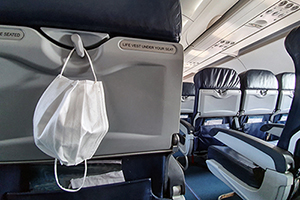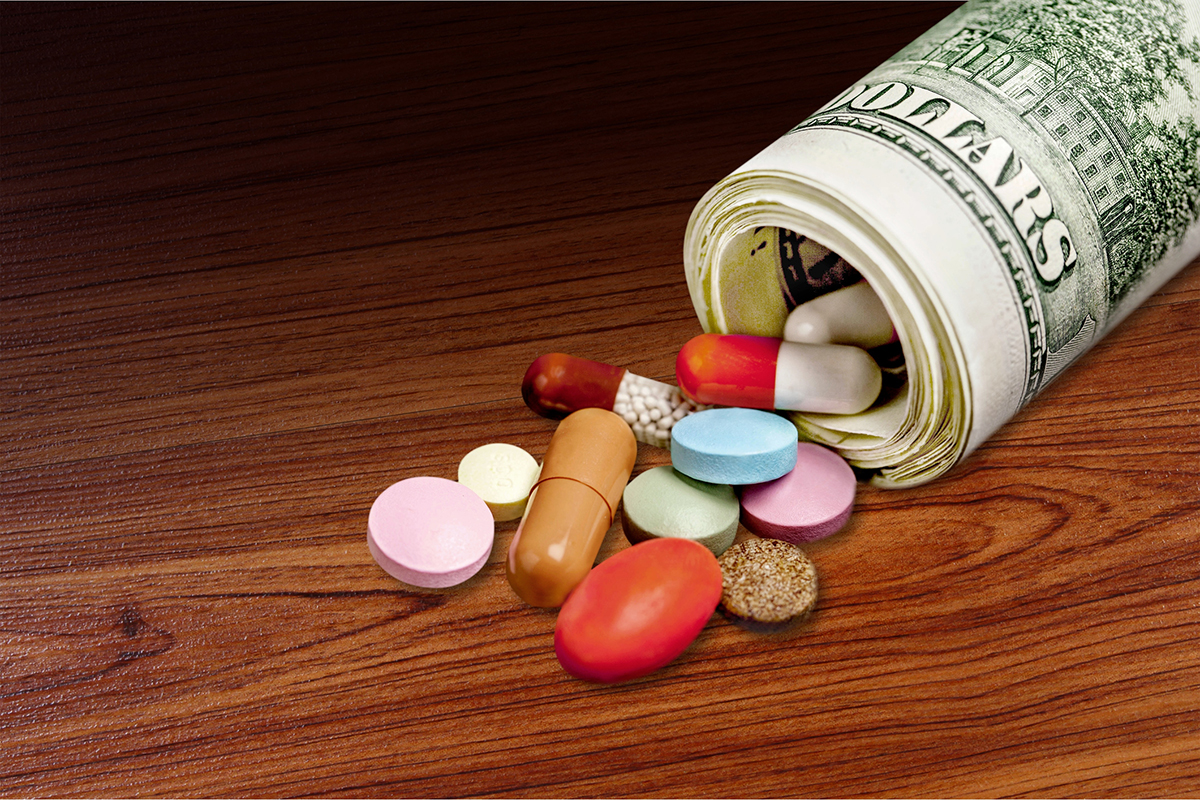Medical emergencies occur with disturbing frequency on planes. One colleague of mine had the extraordinary experience of having to help subdue an out-of-control passenger on her flight to a medical convention; on her return flight, she was called upon to minister to an elderly lady who was experiencing chest discomfort. What are the odds?!
And, in a case that made the news, a holistic doctor friend delivered a baby while in-flight!
With the increasing stress of airline travel, exacerbated by Covid anxiety, fights over masking, and frequent delays and cancellations, many passengers are resorting to self-medication with sedatives prior to boarding. Then they throw back a few drinks in the terminal or indulge on the plane, creating a volatile mix. Doubly intoxicated passengers take off their clothes, try to pry open emergency exits, grope fellow travelers, become combative, or even urinate in the aisles. Then they must be restrained physically and on-board doctors are faced with hard choices over how to help without risking the unruly passenger’s life.
Moreover the tools at their disposal are skimpy and often inappropriate. Airlines are mandated to stock certain instruments and medications, but they’ve recently come under fire from medical authorities. In a commentary entitled “Ever Treat a Patient on a Plane? Why Med Kits Need an Update” editorialists wrote:
“[The airlines] have got to come into the 21st century and have the right tools on board so that we have a positive ending here. The doctors that are called up, we’ve got to give them the right tools. It’s not that they’re not available . . . We need all the medical societies to come to agreement on these other medications (e.g., autoinjectors) to be put on planes. If you’re going to come up in answer to an emergency, you should have basic medical kits updated to reflect what’s going on in society today. It just makes sense.”
Boy, do I know. Returning from a recent trip to Iceland, I was settling in for a long boring flight, contemplating the meager entertainment menu, when the announcement that all doctors dread was broadcast over the PA: “If there’s a doctor on board, please identify yourself to a flight attendant!”
Suppressing the initial impulse to hide, I dutifully pressed the notification button over my seat. An Icelandic Air stewardess led me to a passenger who was lying across two seats with a blanket pulled over his head, softly moaning.
I was enormously relieved to see that another doctor had answered the call, a young woman. “What type of physician are you?” I asked. “I’m an emergency room doc,” she replied. Perfect!
I confessed that, while I was once rigorously trained in internal medicine, and ran innumerable “codes” in my day, my skills were rusty. We got to work.
Since the patient was unresponsive, we tried to obtain a history from his wife, who averred that “He doesn’t tell me anything.” We managed to ascertain that the man, who looked in his 80s, was diabetic and had had heart surgery. Problem!
Was his blood sugar low, which could make him logy, or was it sky high? We were handed a medical kit by a flight attendant, and it had an automated blood pressure cuff, but no glucometer. We determined his pulse was racing—was it regular or did he have an arrhythmia? Even Apple watches these days can alert you to abnormal heart rhythm, and gadgets are on sale for $99 that can render a reasonable facsimile of an ECG by placing your fingertips on a pad—but airlines are not equipped with a simple device to get a rudimentary tracing? C’mon! So we were literally flying blind at 36,000 feet over the Atlantic—with a passenger in distress packing a serious medical history.
We asked the wife to produce her husband’s glucometer. “It’s in the cargo,” she said. What to do? An idea occurred to me: With a full plane, surely there must be some passengers with diabetes who carried theirs. I told the flight attendant to make an announcement, but instead she said “Follow me.” She took me forward to where the crew uses the intercom, and then surprised me by handing it to me. Unsure of her English and the medical terminology, she told me to press the button and talk. Really?? Feeling a little like a hijacker, I broadcast the request. Sure enough, two passengers volunteered their glucometers.
Well, it was a good thing we didn’t give the patient a sugary wallop with the orange juice the flight attendant had helpfully proffered—his blood sugar was 370! Instead we gave him a shot of insulin.
The stewardess then walked us up through first class to the front of the plane, and, to our surprise, the cockpit door popped open, and we were standing on the flight deck, treated to a spectacular view of the coast of Greenland, glaciers shedding icebergs.
The pilot, a grizzled Icelander, turned toward us and asked: “So what do we do? The nearest hospital is an hour and a half behind us, in Reykjavik. Do we need to turn around?” I looked at the other MD and we both answered: “No.” We explained that were we to be confronted with a patient like this in an emergency room, we’d have him immediately admitted for observation and treatment. But we felt he was in no immediate danger, and we could monitor him safely until we landed in New York. Still, we encouraged the pilot to radio ahead to have EMTs meet us at the gate.
The patient’s skin felt hot, but we had no thermometer; he was coughing, but the stripped down emergency kit didn’t include even a simple pulse oximeter, a small device costing 30 or 40 dollars, which could’ve indicated whether he was oxygen depleted.
The long and short of it is that we concluded that the passenger had some sort of infection, probably respiratory—maybe even Covid—that was causing his pulse to race and his diabetes to decompensate. He had no business getting on a flight in that condition. We landed and he was taken off to the hospital.
This wasn’t my first in-flight medical emergency. It happened to me once before, around fifteen years ago. I was called to first class to look at a patient who was having trouble breathing. By the time I got to his seat, I could see he was in serious trouble.
His seatmate then showed me an empty packet of salad dressing that the distressed passenger had used on his salad. As his airway closed, he shared that he was allergic to dairy, and there on the ingredients list were the incriminating words “milk solids”.
I informed the worried flight crew that this was indeed an emergency—the equivalent of a 911, only six miles up. It was an anaphylactic reaction—the life-threatening kind. We were already beginning our descent, about 45 minutes from JFK.
I asked for the emergency kit. The tiny box they handed me had no Epi-Pen—the ubiquitous antidote that all allergy sufferers know to carry. Instead, there were unwieldy glass vials of medication that I had to snap open by hand, and arduously draw up with a syringe. I wasn’t sure whether it was the plane’s shuddering or my tension that was causing my hands to shake.
I gave him a shot of epi under the skin, then waited. No go. A second and a third shot, as is the usual protocol for a severe allergic reaction, and the patient still wasn’t moving air. Improvising, I asked a nearby passenger for his necktie so I could tie off the sufferer’s arm. Then I broke open a vial of Benadryl and mainlined it into a vein.
As the seatbelt sign went on and the cabin tilted downward, my patient let out a little gasp and his face reddened as his blood re-oxygenated. He was finally breathing on his own.
We landed and this time the EMTs didn’t wait until we taxied to the gate; they burst in directly from a waiting ambulance on the runway. But the guy was OK and made it out on his own.
Later he phoned and thanked me. I received a voucher from the airline for $78.
I’d rather the airline had heeded this near-miss, and equipped its planes with more appropriate emergency equipment so we health professionals can do our jobs. It’s 15 years later, and I’m still waiting.







